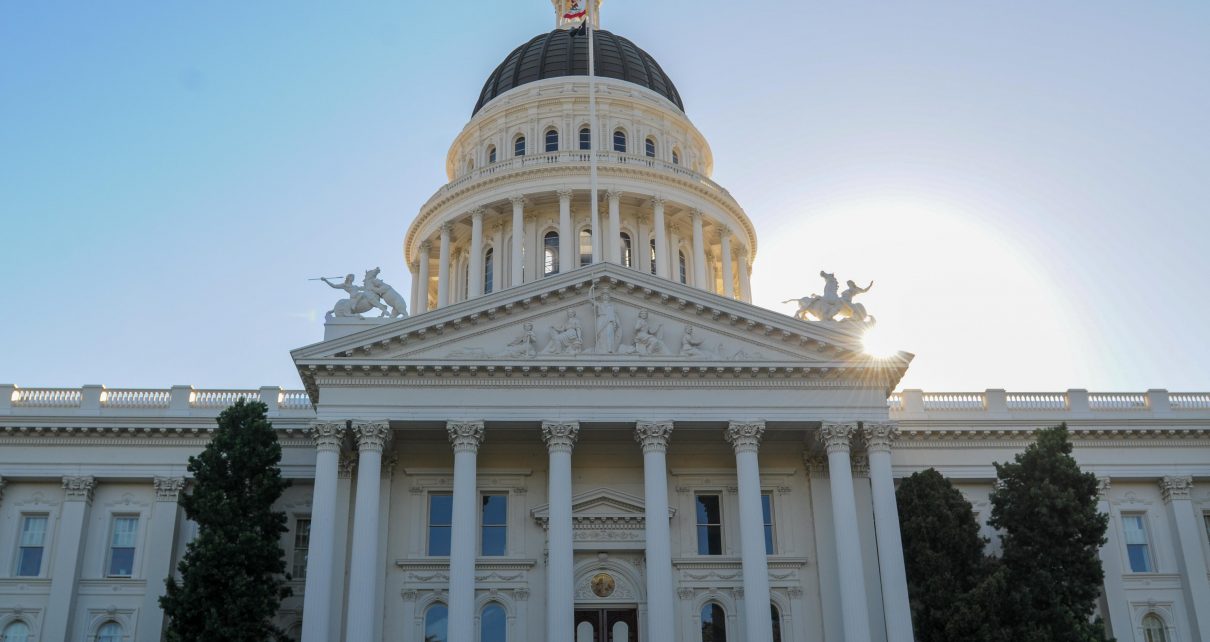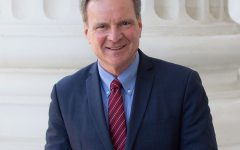
California State Capitol. (Photo: Kevin Sanders for California Globe)
OPINION: Guaranteed Income for Homeless High School Grads
More pandering for the youth vote or something more insidious?
By Martin Marks, May 30, 2022 7:42 am
Last week, we reported on the movement gathering steam to cancel student loan debt as perhaps an effort by Democrats to recapture the heretofore reliable vote of the under thirty crowd. Recent action in Sacramento indicates yet another effort to throw money at the young folk in advance of November’s mid-term elections.
The California State Senate passed SB 1341 which would establish the California Success, Opportunity, and Academic Resilience (CalSOAR) program to provide guaranteed income to 15,000 eligible homeless graduating high school seniors beginning with the Class of 2023. The bill now moves to the General Assembly for consideration.
This move of course is not the first in California or in the United States to establish a so-called Guaranteed Income—in essence a wealth transfer to various classes of citizens (and non-citizens) based upon income, race, gender, and other criteria. In addition to government funded programs there are several privately funded programs, and public-private partnerships embarking on guaranteed income endeavors.
Guaranteed Income is not to be confused with Universal Basic Income (UBI) a concept that has been around for quite some time and is most interestingly been fully implemented in only one nation–Iran. The five defining characteristics of UBI are:
- Periodic: distributed in regular payments
- Cash payment: distributed as funds, not coupons or vouchers
- Individual: paid to every adult citizen, not just every household
- Universal: it is paid to all citizens, regardless of their situation
- Unconditional: there are no requirements regarding employment status or any other criteria
There are many other nations who are currently deliberating or have implemented pilot programs for UBI. There are several jurisdictions in the U.S. with such pilot programs. A federal UBI program known as the Freedom Dividend was the hallmark of the 2020 Democratic presidential primary candidacy of Andrew Yang. Yang advocated for a $1000/month payment to every American. While that idea garnered hyper-salivation from the extreme Left, it died–or at least went dormant—with the demise of Yang’s presidential prospects.
By contrast, programs such as CalSOAR and others like them are targeted and come with qualifications attached. Additionally, these programs ultimately can lose strict oversight of the government as the wealth transfer is administered by various not for profit agencies.
In the Golden State, just take a look at Oakland’s pilot program to see what the rationale and the likely trajectoires are for California’s wealth redistribution goals. Oakland’s Resilient Families program, initiated just last year, began by providing 600 randomly selected families with low incomes and at least one child under 18 a guaranteed income of $500 per month for at least 18 months. The kicker? Poor white families need not apply. To qualify for the program, applicants must be BIPOC according to the program’s web site. While not spelled out on the web site, and for those uneducated or unwoke to the term, BIPOC means Black, Indigenous, and People of Color. In announcing the program, Oakland Mayor Libby Schaaf explained:
“Our vision is an Oakland that has closed the racial wealth gap and where all families thrive. We believe that guaranteed income is the most transformative policy that can achieve this vision.”
Others have read into this more and have described racially exclusionary program as an end run around to, or a precursor of reparations for slavery, an institution that ended more than 150 years and multiple generations ago. And for those who doubt just how serious California is to be first state in the nation to the reparations for slavery table, Assembly Bill 3121 was signed into law in 2021 which created a state task force to study and advise on just who should be eligible for payments once California begins doling out reparations cash. The task force finalized their recommendations in March.
And as mentioned earlier, race is not the only criterion for targeted guaranteed income payments in California. Marin County has targeted low-income women with a child under the age of 18. San Francisco has earmarked $1000/month to qualified artists. Beginning in 2019, Stockton began monthly payments of $500 for two years to 125 people living in neighborhoods with a median income below $46,034. The payments came with no strings attached such as finding employment or limiting how the money could be spent. And in Los Angeles County—the nation’s largest county—the BREATHE program provides $1000/month to those who are 18 years or older, live in an LA County neighborhood that falls at or below the county’s area median income (AMI), and have a household income that falls at or below the county’s AMI. For a single person that income has a cutoff at $56,000. For a family of four, the cutoff is $96,000. Sacramento County has a similar program but on a smaller scale in terms of funds provided and their duration.
This brings us to the CalSOAR program, which when ultimately enacted will be a state-wide program targeting homeless young adults just graduating from high school. SB 1341 provides that the program would convey $1000/month for at least 4 months to eligible applicants, estimated to be 15,000 in number for 2023. With tens of thousands of California’s homeless youth set to graduate high school in subsequent years the CalSOAR sponsor Senator Dave Cortese (D-Campbell) expects the yearly cost of the program to be $85 million.
Down sides? As with any government program that provides free money, there is a fear among economists that Guaranteed Income presents a moral hazard that would disincentivize the recipients from seeking and obtaining employment. Additionally, the “no strings attached” facet of these programs, where the recipients can use the money in any way they desire, seems problematic—especially when it comes to recent high school graduates. In any generation, youthful discretionary spending is apt to be lacking in…….discretion.
The Office of National Drug Control and Policy estimates that almost two-thirds of those who experience perpetual homelessness have a substance use disorder or other chronic health condition. About 30% of those who experience chronic homelessness suffer from a severe mental health issue. While those homeless of high school graduation age might not fall specifically into these percentages, one must consider the advisability of unrestricted free money to this segment of society.
Finally, with the rapid introduction of city, county, and now state-wide targeted guaranteed income programs, can a move toward Universal Basic Income where everyone receives a check regardless of status be far behind? And if there is a progressive’s utopian dream lurking, California is likely to be the trend setter. The staggering cost for such a program—whether it be state or federal— and the potential to do damage to existing welfare safety nets are certainly worth consideration, debate, and unequivocal dismissal post haste. In the People’s Republic of California, don’t be too sure of that though.
So, one could plausibly look at SB 1341 and the CalSOAR program as an (another) effort to purchase the youth vote. But can one really consider California’s homeless high school graduates a solid voting bloc? Probably not. In actuality, coupled with the growing number of guaranteed income programs now available or soon to be, there is likely something far more insidious at play—California’s continued lurch to the left and dangerous infatuation with full-fledged socialism.
- Dodgers’ Ohtani Embroiled in Gambling Scandal - March 22, 2024
- Overwhelming Migrant Ingress Shifts To California - March 5, 2024
- Bay Area School District Parting Ways With Woke Kindergarten Program - February 15, 2024





The answer to ‘what other insidious motivator is this for’ is in paragraph 6 of your article.
…………..As the wealth transfer is facilitated by various not for profit agencies.
Dig deep and find the names of the board of directors of the various not for profits and you will discover the shell game of corruption. Hence the insidious “other “ reason for this legislation!
So many homeless high school kids is just another red flag among many. This state is pretty darn messed up and the Governor deserves much of the credit for that.